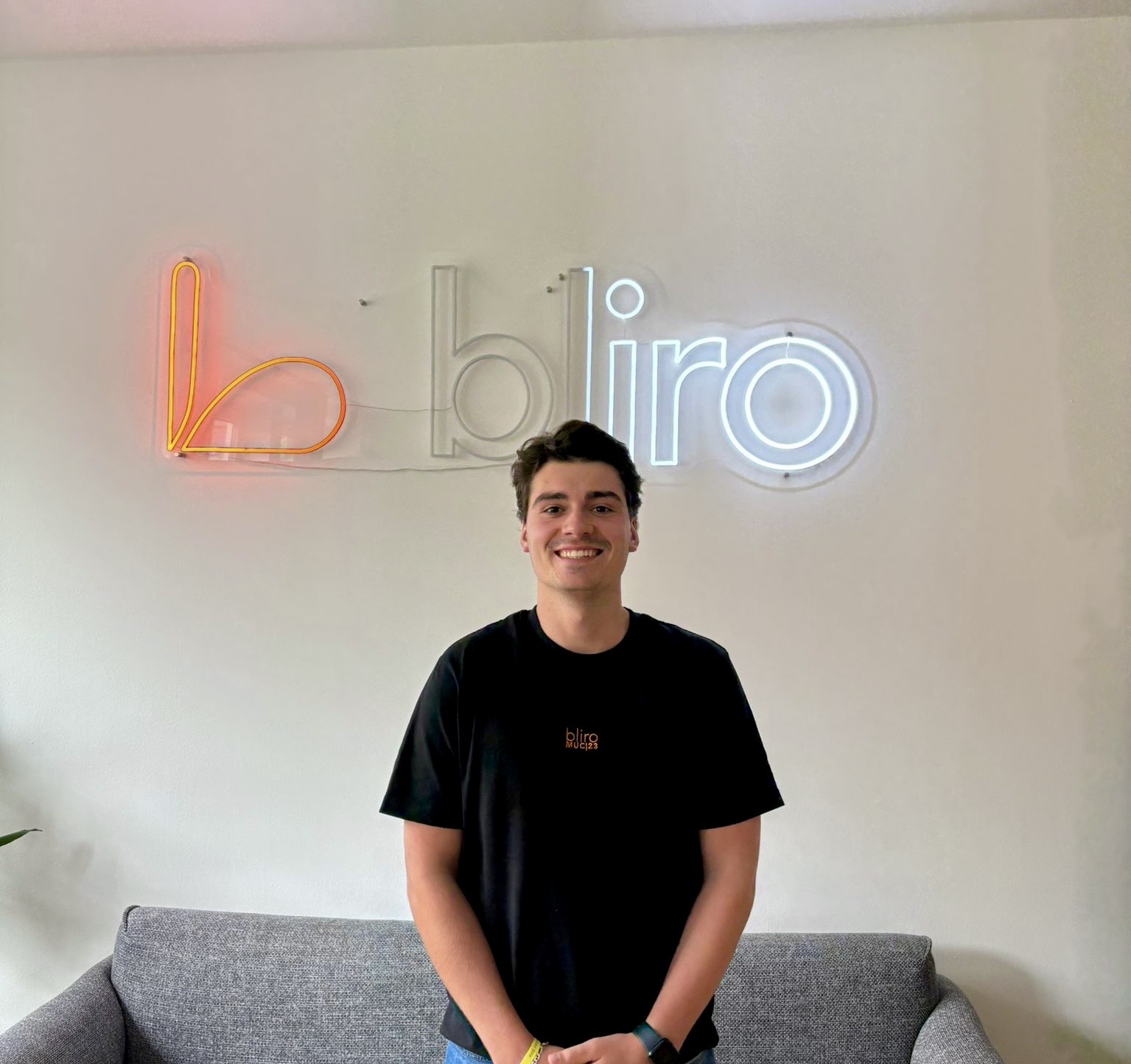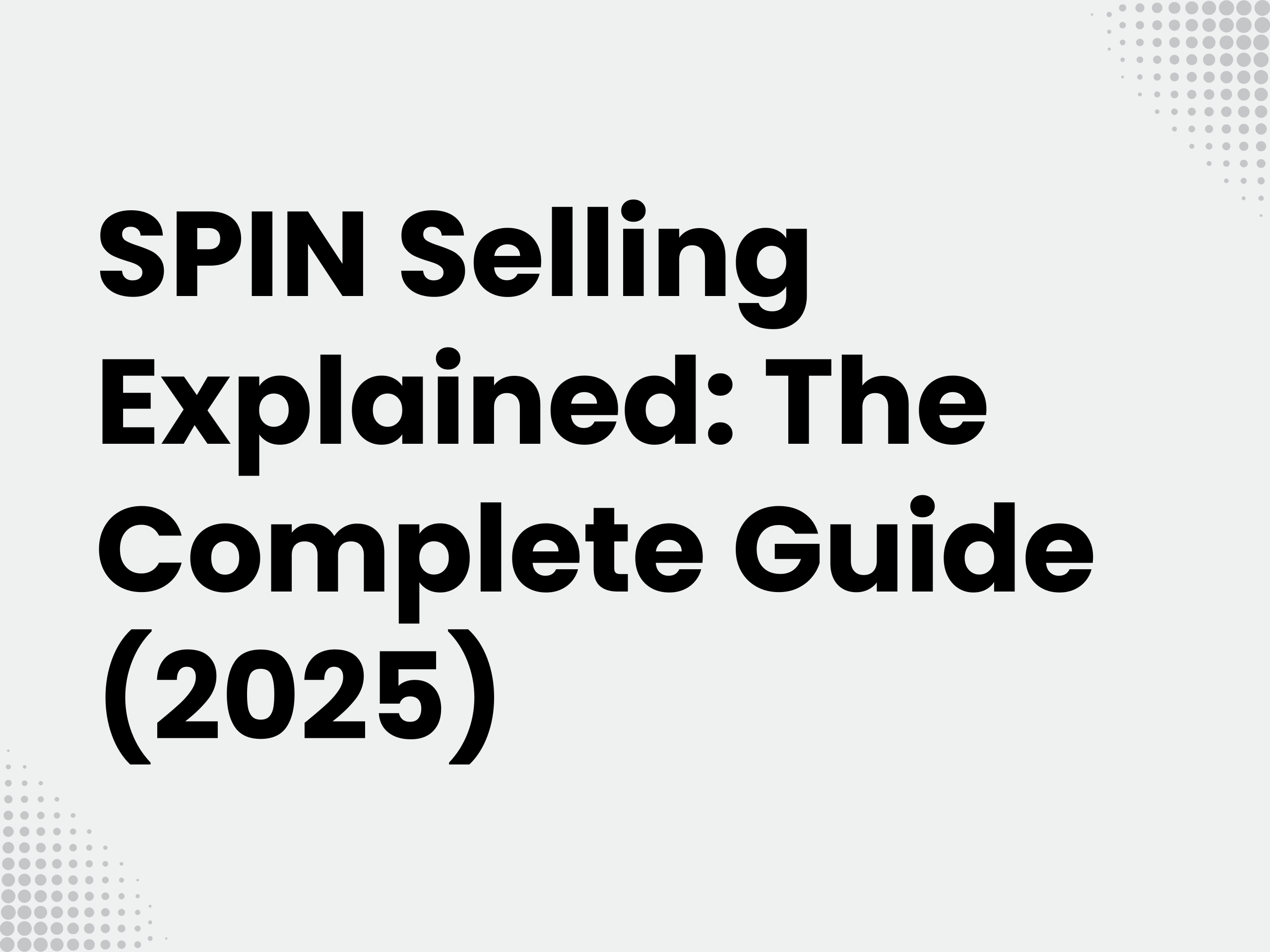Discover how you can structure your sales calls with SPIN Selling and achieve measurably better results. Neil Rackham developed this method in 1988 after analyzing thousands of sales calls and proved a decisive point: Successful salespeople use systematic questions instead of product presentations to understand customer needs.
The figures speak for themselves: SPIN Selling increases sales productivity by 17%. The reason lies in the methodological approach of the four SPIN question types - situation, problem, implication and benefit questions - which guide customers to a purchase decision themselves.
Learn how to implement the SPIN method in your day-to-day sales, which common mistakes you can avoid and how tools like Bliro help you effectively document and track every customer conversation.
What is SPIN selling?
SPIN Selling is based on a scientifically based question system that structures complex B2B sales processes. The acronym stands for four types of strategic questions: Situation, Problem, Implication and Benefit (in the original: Situation, Problem, Implication, Need-Payoff). This methodology helps sellers understand the actual needs and pain points of their customers through targeted questions.
Definition and origin of the SPIN method
Neil Rackham and his team of Huthwaite Corporation analysed more than 35,000 Sales talks with 10,000 sellers in 23 countries over a period of twelve years,. This extensive study refuted many established sales practices.
The findings were insightful: Successful salespeople not only ask more questions, but other types of questions in a specific order. Instead of advertising products directly, they use systematic question patterns to develop needs. The resulting SPIN model appeared in 1988 and became one of the most influential sales advisors worldwide.
Why SPIN selling is so effective in B2B sales
B2B sales processes require a consultative approach that takes complex decision cycles and multiple stakeholders into account. SPIN Selling addresses precisely these challenges through a deep understanding of the customer situation.
The figures prove the effectiveness: 30% of the 100 largest companies worldwide use the SPIN method. The success is based on a customer-oriented approach - SPIN users let customers identify their needs themselves by asking clever questions.
Modern tools such as Bliro reinforce this effect through systematic documentation and analysis of SPIN conversations, which facilitates consistent use in everyday sales.
SPIN selling vs. classic sales methods
Traditional sales techniques focus on closing techniques and feature benefits presentations - approaches that are less successful in complex B2B sales. SPIN Selling consistently focuses on customer needs.
The decisive difference: SPIN does not push for deals, but develops them through careful development of requirements. Rackham's study proved that aggressive closing techniques are counterproductive for larger sales. There are no objections at all, as the systematic structure of questions avoids them from the outset.
While classic methods rely on rigid sales scripts, SPIN offers a flexible framework for individual sales situations. The distribution of calls speaks for itself: Successful B2B sellers speak only 43% of the time, while their customers speak 57%.

An overview of the four SPIN question types
The SPIN method is based on four systematic question types, which build on each other and enable structured sales calls. Instead of immediately presenting product benefits, these targeted questions gradually lead customers to identify their own needs - particularly effective in complex B2B sales.
Situational issues: Understanding the status quo
Situational questions form the start of the conversation and collect basic information about the current customer situation. These questions create the basis for in-depth discussions and provide important context.
Important: Successful salespeople deliberately ask fewer but more focused situational questions. Too many questions can be boring or make you feel interrogated. Prepare yourself and research basic information in advance.
Typical situational questions include:
- “How is your current workflow organized?”
- “What tools are you currently using for this challenge?”
- “How many people are employed in your department?”
Problem questions: uncovering challenges
Problem questions identify customer difficulties and challenges. They uncover “implicit needs” - problems or dissatisfaction that the customer is already feeling.
Note: People can live with problems without actively seeking a solution. Your task is to uncover these implicit needs through clever problem questions and later to transform them into explicit needs.
Effective problem questions could include:
- “What difficulties are you experiencing with your current system?”
- “How satisfied are you with the speed of the existing process?”
- “How often do operational problems arise?”
With Bliro, you document these problem questions and analyze which work particularly well with your target customers.
Implication questions: Create urgency
Implication questions are the decisive turning point in the SPIN sales conversation. They illustrate the consequences and effects of the identified problems and create urgency. Successful salespeople ask four times as many implication questions as average colleagues.
These questions help customers to recognize the true scope of their problems - sometimes with consequences that they themselves have not yet considered. This increases motivation to find a solution.
Effective implication questions include:
- “What is the impact of this issue on your customer relationships?”
- “How are these delays affecting your delivery reliability?”
- “What could be the long-term consequences of this problem for your market position?”
Benefits issues: Making added value visible
Benefit questions (also known as need payoff questions) complete the SPIN model and illustrate the added value of a solution. These questions encourage the customer to articulate for themselves the benefits that a problem solution would offer.
Particularly valuable: When the customer formulates the benefits himself, this is more convincing than when you, as a seller, list the benefits. In addition, benefit issues demonstrably reduce objections, as the customer has already mentally accepted the solution.
Examples of effective benefit issues:
- “How would your productivity change if you could solve this problem?”
- “What value would it have for your team if this process were automated?”
- “How would faster processing improve your customer satisfaction?”
With Bliro's analysis functions, you can track which benefit questions are particularly well received by your customers and generate the highest probability of closing.

The 4 phases of a SPIN sales call
Successful SPIN sales processes follow a structured sequence of four clearly defined phases. Neil Rackham identified these phases after analyzing thousands of sales calls and realized that top sellers consistently use this pattern. While the SPIN question types represent the “how” of communication, the four phases form the strategic framework for the entire course of the conversation.
Phase 1: Opening a conversation and building a relationship
This is where you create reports and gain the trust of your potential customer. Avoid the common mistake of starting with products or solutions right away. Instead, show genuine interest in the person and their company.
Successful salespeople use targeted situational questions to:
- Open up the conversation and collect relevant basic information
- To attract attention and create a basis of trust
- To gain initial insights into the business situation
Bliro helps you retrieve and document relevant contextual information before the interview - for a professional start.
Phase 2: Analyze requirements with specific questions
This second phase is considered to be the most important in the entire spin process. This is where the core of the SPIN method comes into play: Problem and implication questions uncover the actual challenges faced by your interlocutor and analyze their effects.
Focus on these key aspects:
- Identify underlying issues that your offering can solve
- Demonstrate urgency through clever questions
- Understanding customer purchase criteria and priorities
With Bliro, you record these findings in a structured way and link them to previous conversations.
Phase 3: Present the solution and emphasize the benefits
After fully understanding the needs, you present your solution. Use benefit questions here so that the customer himself recognizes and formulates the benefits of your solution.
Use this approach instead of standardized product presentations:
- Target the solution to identified problems
- Highlight specific benefits for individual customers
- Let customers recognize the value themselves through benefit questions
Use Bliro to document which solution aspects were particularly well received by the customer and use these findings for follow-up discussions.
Phase 4: Prepare the deal and get commitment
This final phase is not necessarily aimed at closing the sale immediately, but at the next meaningful step. For complex B2B sales, the process can take several months, and each conversation should ideally result in an “advance.”
The “conditional advance agreement” works particularly effectively:
- Suggest the next step defined at the start of the conversation
- Set clear expectations and address objections early on
- Ask specific commitment questions to create commitment
Bliro systematically records these agreements and ensures that no follow-up is forgotten - crucial for the consistent implementation of the SPIN method.
SPIN Selling: Field-proven application in various industries
SPIN Selling is particularly effective in the practical application of various industries. Learn how to use the method in an industry-specific way and what specific results you can expect.
SaaS sales: selling complex software with a system
A CRM provider uses SPIN to convince a sales manager. Situational questions start the conversation: “Which CRM tools are you currently using?” Problem questions follow: “Where are you reaching limits with the existing system?”
The implication questions create urgency: “How are these integration issues affecting your sales goals?” After all, benefit questions allow customers themselves to see the value: “What impact would a fully integrated CRM have on your growth?”
Outcome: With SPIN, SaaS sellers reach up to 35% higher closing rates for premium solutions.
Mechanical engineering: Turning production downtime into revenue
Maintenance providers use SPIN specifically for cost-intensive industrial solutions. Situational questions clarify the initial situation: “How often does maintenance interrupt your production?” Problem questions reveal pain points: “What are the downtime costs?”
Implication questions illustrate the scope: “How do unplanned shutdowns affect your customer contracts?” Benefits lead to a solution: “What value would uninterrupted maintenance have for your annual planning?”
This method helps tech professionals address customer issues at the business level.
Management consulting: Demonstrate competence through specific questions
Counselors use SPIN to directly demonstrate their analytical capabilities. During the questioning process, they show exactly the competencies that customers expect: systematic problem analysis and strategic thinking.
Professional communication on equal footing is crucial - regardless of the interlocutor's hierarchical level.
SPIN Selling with Bliro: AI-powered conversation optimization
Bliro reinforces SPIN conversations through automatic documentation and analysis. The AI creates structured meeting notes and identifies successful question patterns.
The figures are convincing: Teams achieve with Bliro 22% higher closing rates and 11% higher order values. In addition, managers receive complete transparency over all customer conversations.
Use Bliro to systematically optimize your SPIN questions and turn every conversation into actionable insights.

4 expert tips for successful SPIN talks
Learn how to optimally implement the SPIN method and avoid common stumbling blocks. Successful salespeople know that theory alone is not enough - consistent practice and systematic optimization make the decisive difference.
Prepare and adapt questions
Prepare your SPIN questions strategically instead of improvising spontaneously. Research basic information about your interlocutor's company and industry beforehand. Then develop tailored SPIN questions for their specific situation.
Important principle: Have a conversation, not an interrogation. With Bliro, you systematically document successful question types and optimize them for future discussions.
Active listening: The key to success
61% of Customers do not feel they have been heard enough by sellers. Active listening is decisive for successful conversations. Focus on letting the customer talk and really understand.
Improve your conversation by:
- Listen attentively without interruptions
- Open-ended questions that make you think
- Body language that shows genuine interest
Bliro's conversation analyses help you to continuously sharpen your listening techniques.
Training and role-playing: Practice makes perfect
SPIN selling requires systematic training - the technology does not develop intuitively. Invest specifically in:
- Interactive workshops with hands-on role-playing games
- Flexible online courses for continuous learning
- Individual coaching with direct feedback
Avoid common mistakes
Avoid these typical spin stumbling blocks: Too many Situational issues bore customers, while aggressive problem questions scare off. Particularly critical: Skipping implication and benefit questions significantly weakens your conversation.
Treat SPIN as a flexible framework, not as a rigid script. Modern buyers also expect you to come prepared - basic research during the conversation seems unprofessional.
Conclusion
SPIN Selling has proven to be a great sales methodology for complex B2B processes for over three decades. The systematic questioning technique consisting of situation, problem, implication and benefit questions helps you to uncover precise customer needs and present tailor-made solutions.
What distinguishes SPIN from conventional sales techniques: Customers identify their needs themselves through specific questions. This makes your conversations more natural and compelling than aggressive product presentations.
The method works across industries - whether SaaS, mechanical engineering or consulting. However, successful application requires consistent practice and reflection on your conversation.
Bliro strengthens your SPIN strategy through automated interview documentation and analysis of your questioning techniques. The tool helps your team to continuously make better sales calls and gain valuable customer insights for strategic decisions.
Successful salespeople know that the quality of the conversation determines sales success. SPIN Selling provides the structured framework, Bliro ensures that no important customer insight is lost. This combination makes SPIN a tried and tested sales method for modern B2B sales.




